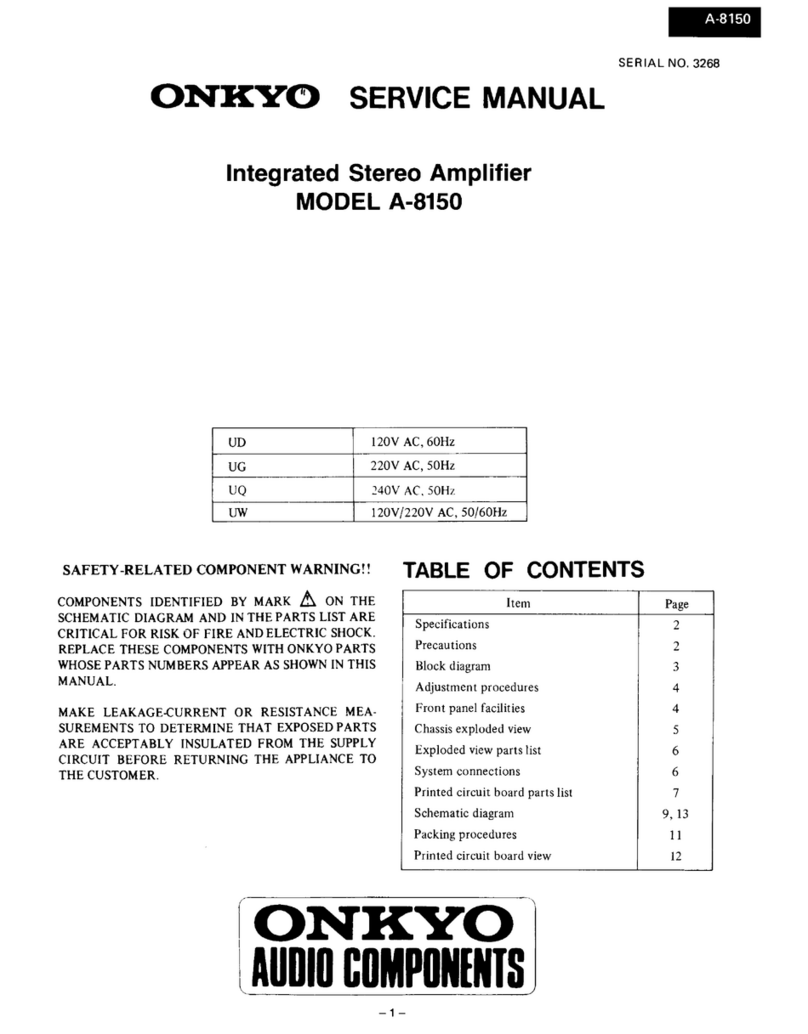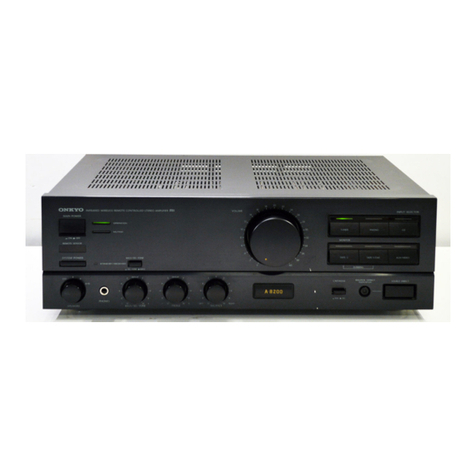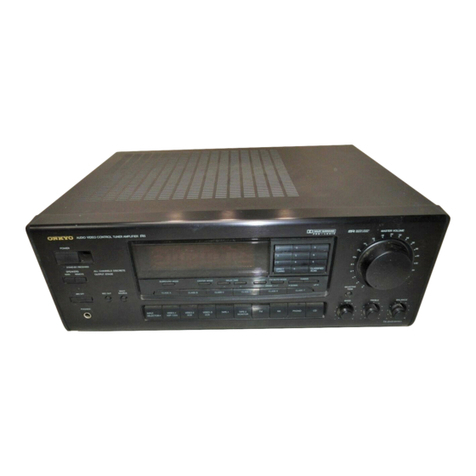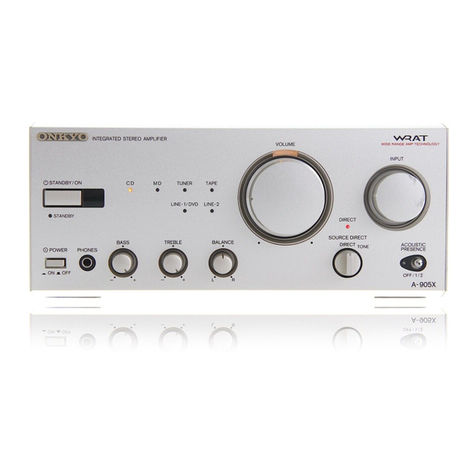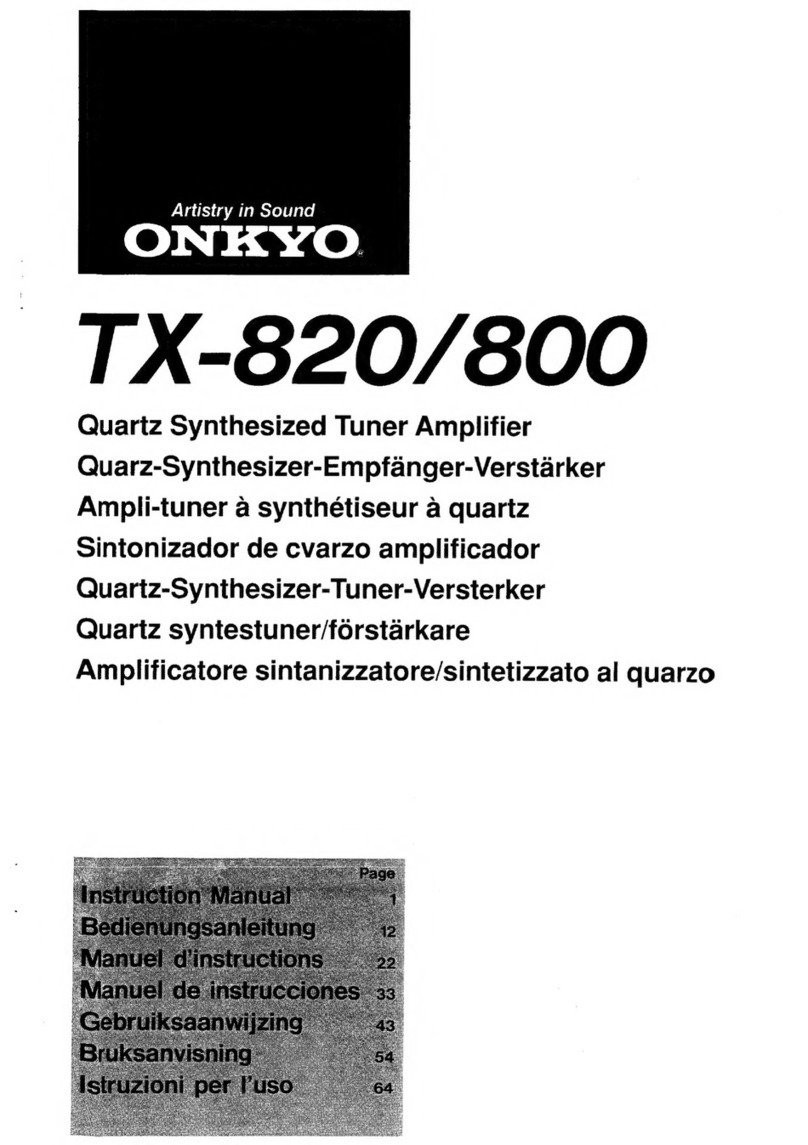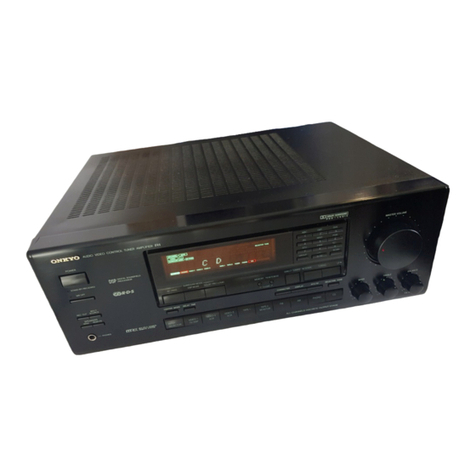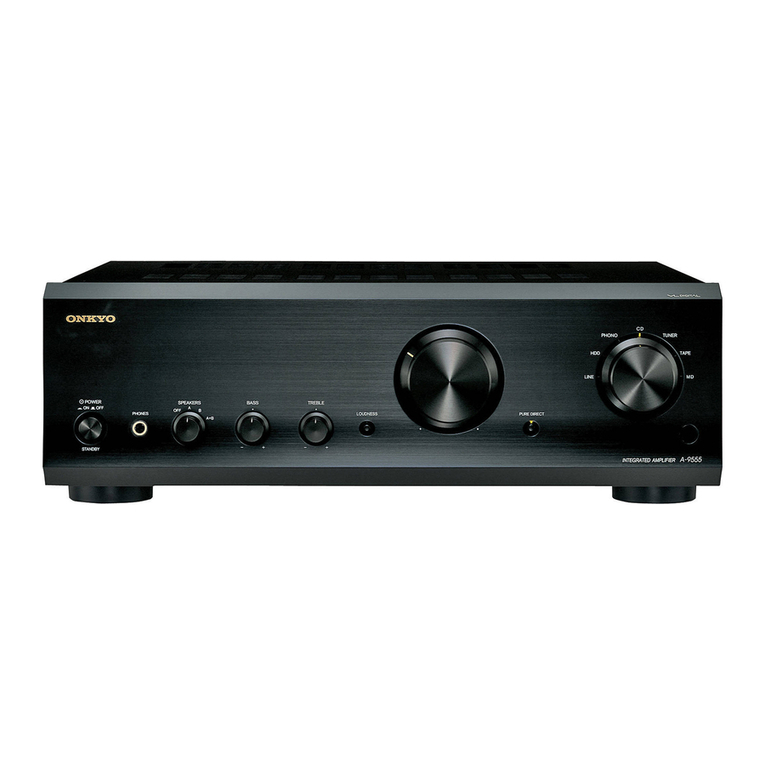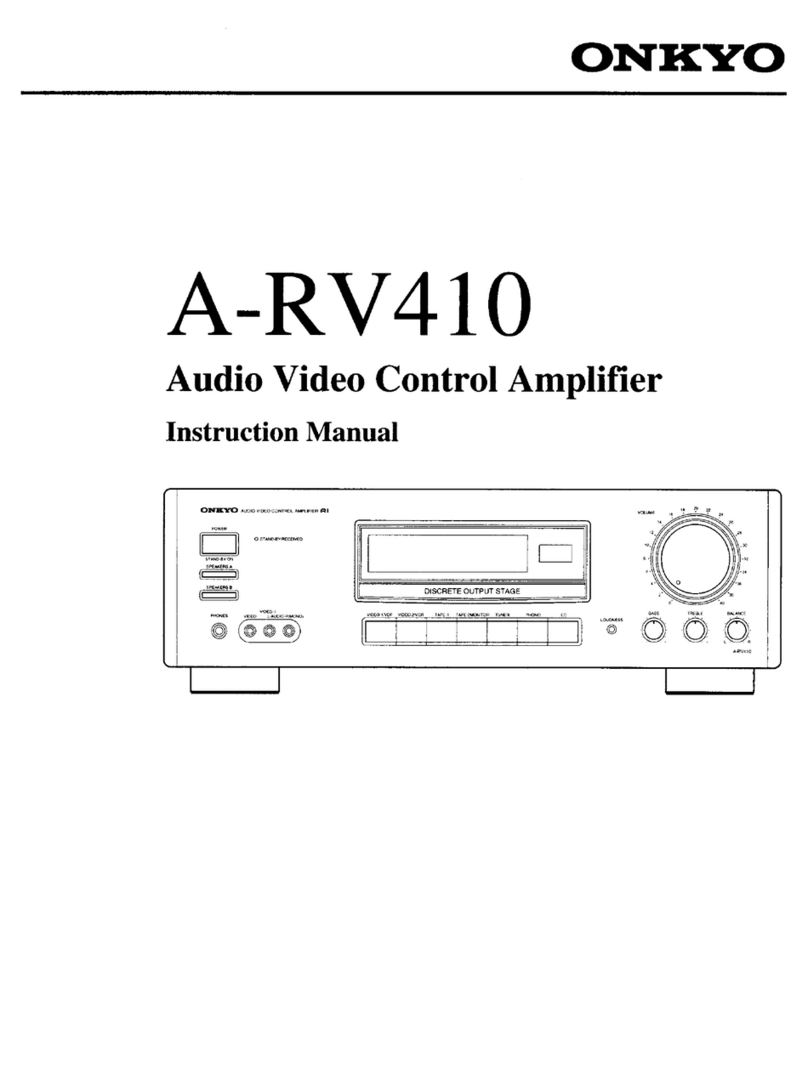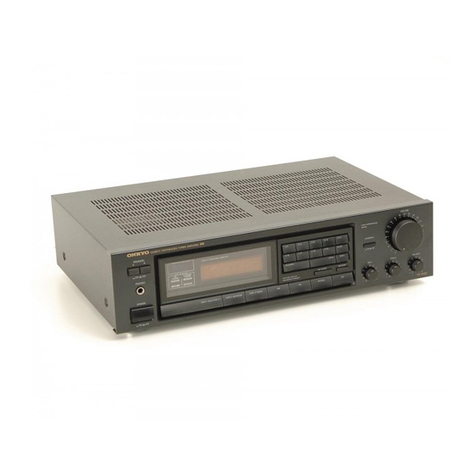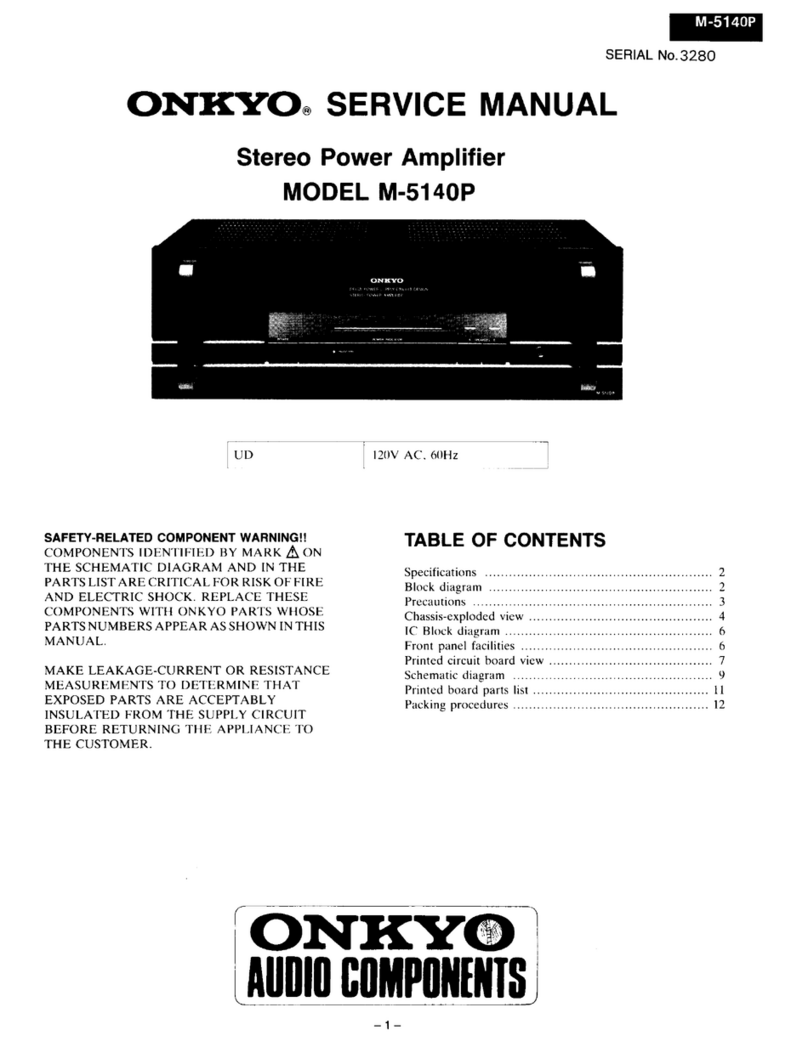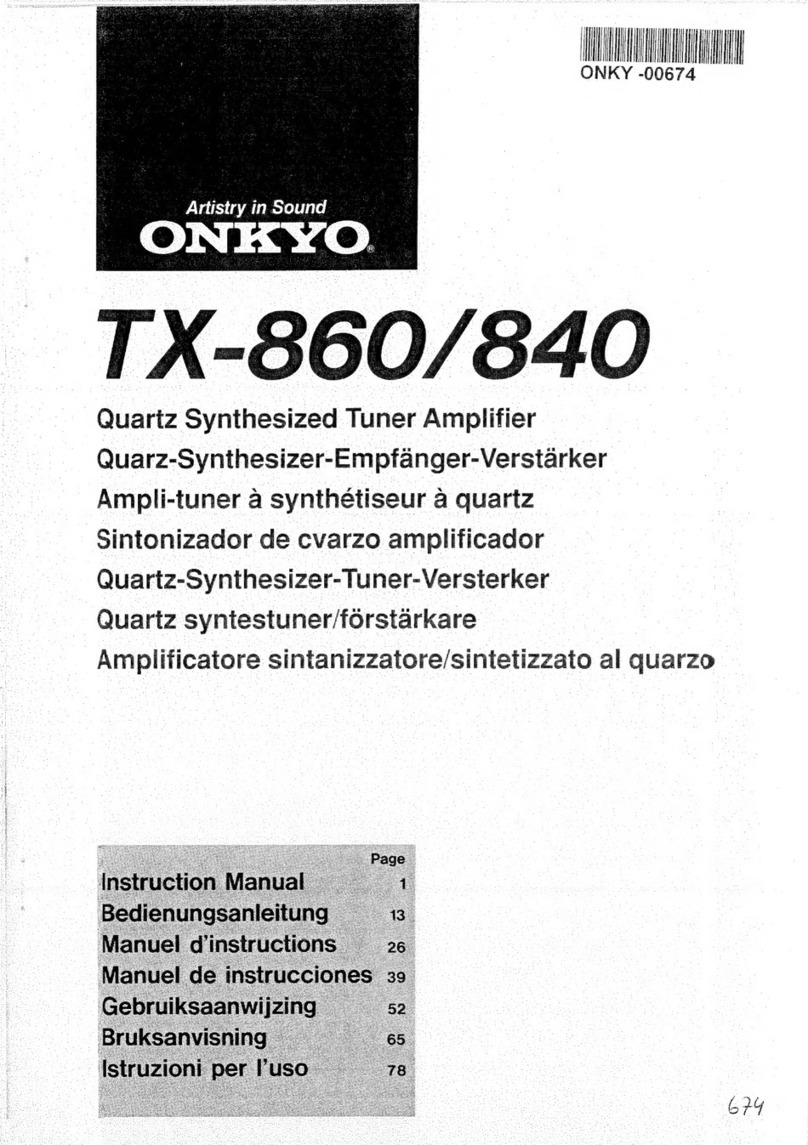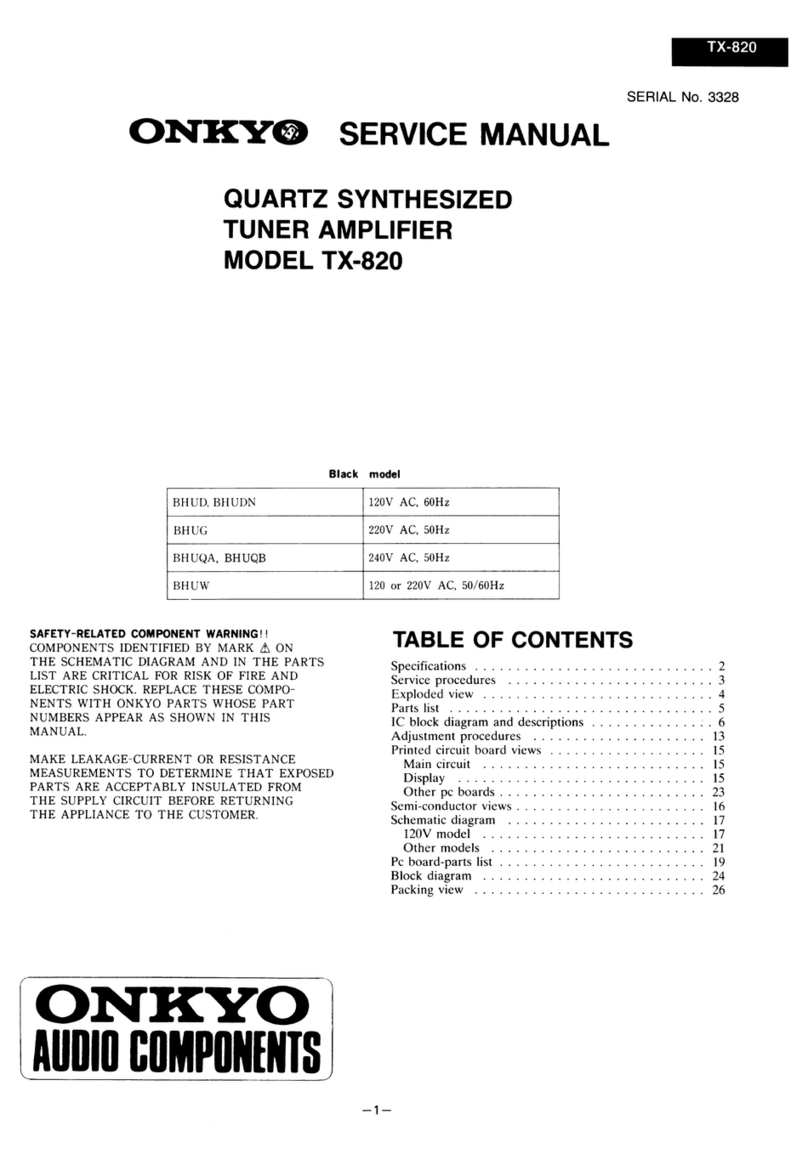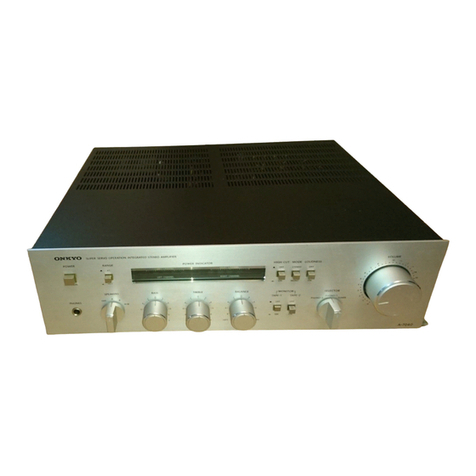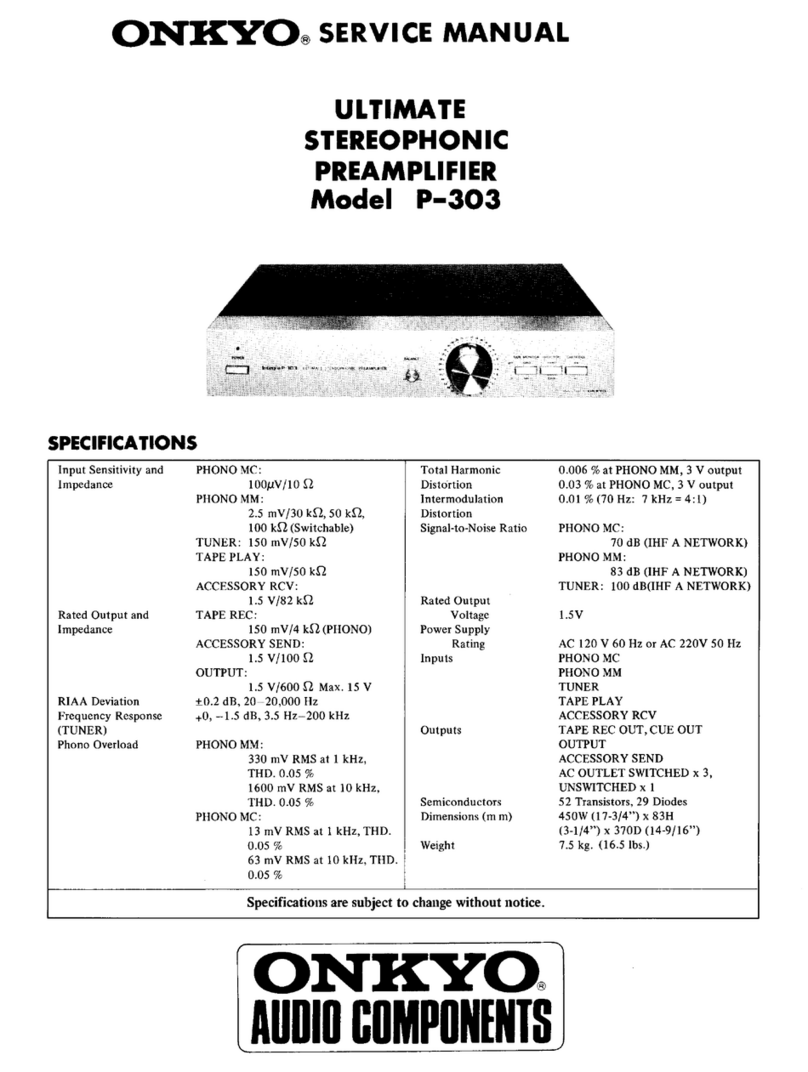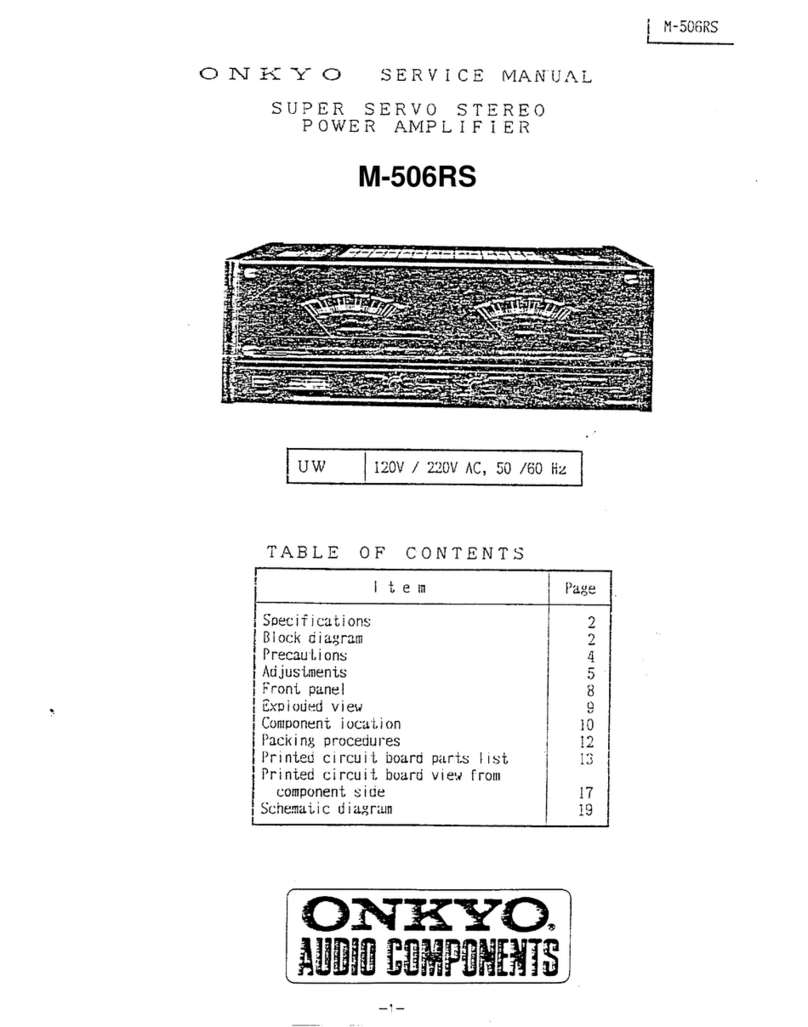6
Care and Handling
Speaker care
Wipe the cabinet occasionally with a dry, soft cloth. For
heavier dirt, after dampening a soft cloth in a weak solu-
tion of mild detergent and water and wringing it out thor-
oughly, wipe off the dirt.Then, dry the unit immediately
with a clean cloth.Do not use rough material, thinners,
alcohol or other solvents, since these could damage the
finish, remove the panel lettering, or cause discoloration.
If you are using a chemical cloth, always follow the instruc-
tions that come with the cloth.For dust accumulated on
grilles, use a vacuum cleaner or brush off the dust.
Using the speakers with aTV set or computer
In general, Braun tubes used for color television sets
and computers are extremely sensitive and can be
affected even by the magnetism of the earth. If a
speaker system is used near them, therefore, discolor-
ation or distortion of pictures will occur.
To permit use with a color television set or computer,
this speaker system features magnetic shielding.Even
so, discoloration may still result, depending on the
installation environment.If discoloration occurs, turn
off the power to the television set or computer, wait for
15 to 30 minutes and then turn it on again.This acti-
vates the self-demagnetizing function of the television
set or computer, improving the display condition.
Note
If discoloration persists even after you perform this remedy,
move the speaker away from the television set or computer.
Discoloration may also be caused when a magnet or other
magnetizing object is placed near the television or com-
puter.
Precautions on speaker use
This speaker system can handle the specified input
power when it is used for ordinary music reproduction.
However, if the following abnormal signals are fed to
the speaker, the internal circuits may be overloaded,
resulting in burning or breakage of the wires even if the
input power is below the specified rating.
• Noise produced when FM station is not tuned in.
• Sound produced when fast-forwarding cassette
tape deck
• High-frequency sound generated by an oscillator,
electronic musical instruments, etc.
• Oscillating amplifier signals
• Special test signals produced by an audio test CD,
etc.
•Sound produced when connecting or disconnecting
audio connection cables. (Always turn off the ampli-
fier’s power before connecting or disconnecting
cables.)
•Feedback when a microphone is used
About memory preservation
This unit features an auxiliary power source to pre-
serve memory presets from being erased during
power outage.
If the power cable is disconnected, this unit preserves
memory for about two weeks.
Precautions for Handling
Compact Discs (CDs)
Important notes on handling CDs
•Carefully lift the disc from the
disc case, making sure to
hold the disc by its edges or
the hole in the middle.
•You can use a soft, dry cloth
to wipe dust and fingerprints off
the surface of CDs.
Do not use volatile agents, such
as thinner or benzene, on discs.
Also, do not use conventional
record cleaner or antistatic
agents.
Notes
•Do not place CDs in direct sunlight or in locations subject
to high humidity or low temperature.
• Do not store a CD in the unit’s disc tray for a long period
of time.
Playable discs
This unit can play the following types of discs.
You cannot play discs other than those listed above.
Avoid using heart-shaped or octagonal discs. Playing
irregularly-shaped discs may damage the internal
mechanism of the unit.
Do not use discs that carry a residue from adhesive tape,
rental discs that have peeling labels, or discs that have
custom labels or stickers.Otherwise, you may not be able
to eject the discs, or the unit may become inoperative.
About playing copy-controlled CDs
Some copy-controlled CDs may not conform to official
CD standards.They are special discs and may not
play on the FR-X7A.
Do not use discs that are not audio discs (i.e., CD-
ROMs designed for use with personal computers), as
these could damage the speakers and amplifier.
Disc mark
Contents
Disc size
Audio
CDs
Audio 12 cm
8 cm
(CD single)
